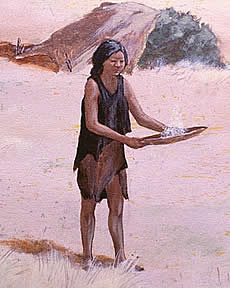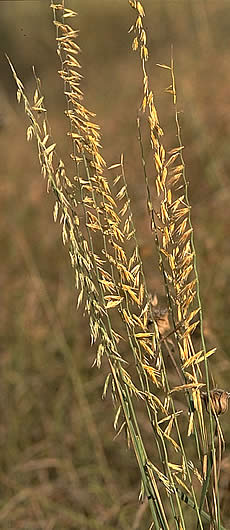Blowing in the Wind

Some Indians used a handy food-processing trick involving wind-power. The trick is called winnowing, a fancy term for using wind to separate seeds from the chaff (stems, husks, and other debris). Many grasses and other flowering plants produce seeds. But most seeds are tiny and surrounded by husks, seed covers, dried flowers, and stems. While seeds are highly nutritious, they are a real chore to clean.

When batches of seeds are gathered, they are usually full of stem fragments, dust, and other unwanted items. To sort out the seeds from the chaff, Indians used the winnowing process. Instead of picking the seeds out by hand (can you imagine picking out thousands of seeds by hand?), they would place the batch of seeds in a flat basket or tray. Then they would toss the contents into the air and let the wind blow away the unwanted lighter material, such as husks, small bits of grass and dirt. The slightly heavier seeds would fall back into the basket, ready to be parched (dried), ground up, and made into flour.
There was a major drawback in the winnowing method, however. If it wasn't windy enough, then the chaff and dust would not blow away and if it was too windy, the seeds would blow away too. It's hard to imagine having to rely on a windy (but not too windy) day in order to get food for tomorrow's meal.
Nature's Grocery Store Prehistoric Kitchen Food Wheel A Thorny Subject Hot Rock Cooking
